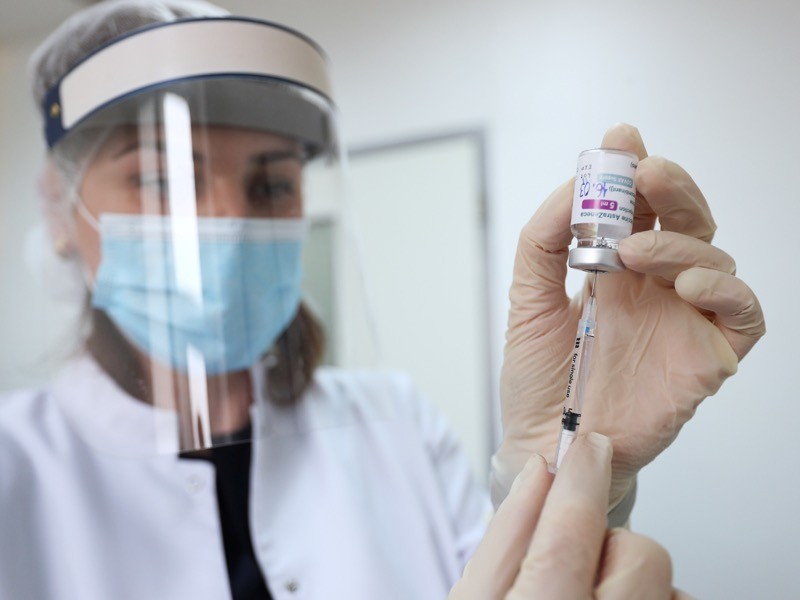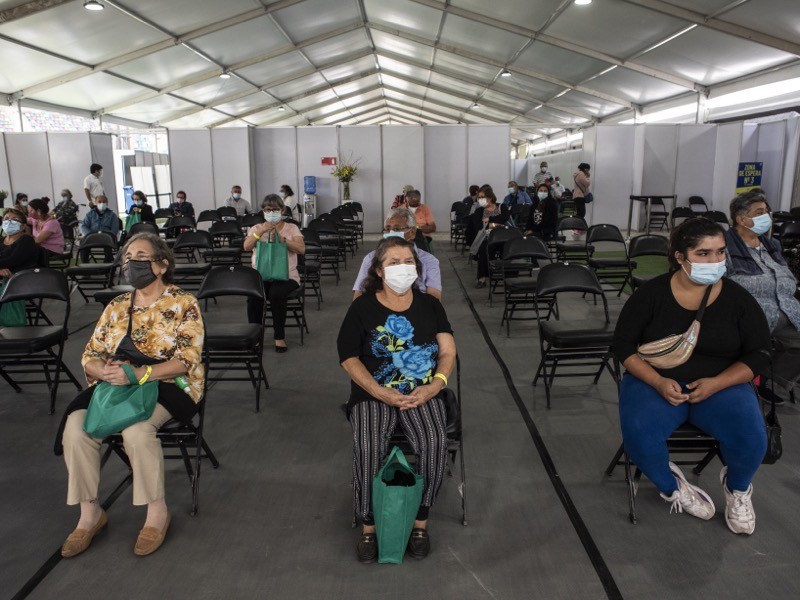The road keeps getting bumpier for a vaccine that most researchers say is safe and effective and has huge potential to protect large swathes of the world. Less than a day after the University of Oxford and the pharmaceutical firm AstraZeneca reported positive early results from the largest-yet trial of their COVID-19 vaccine, officials at a US government agency overseeing the trial questioned claims about the vaccine’s efficacy.
“The world, the species, depends on this vaccine. This is 2.5 billion people’s worth of vaccine,” says Eric Topol, a physician-scientist and director of the Scripps Research Translational Institute in La Jolla, California. Lingering questions over the latest trial are “a real mess”, he adds.
The latest development might amount to “nothing more than a technicality”, says Stephen Griffin, a virologist at the University of Leeds. But it highlights issues around how trial data are being communicated via press releases.
The news comes a week after countries across Europe temporarily halted rollouts to review reports of rare blood-clotting conditions in a very few vaccinated individuals. The vaccine has since been deemed safe by the European Medicines Agency (EMA) and continues to be recommended by the World Health Organization (WHO).
Amid the uncertainty, Nature looks at everything we do and don’t know about the AstraZeneca vaccine.
What is the vaccine’s role in the pandemic?
Table of Contents
Unlike many of the vaccines, which are expensive and must be stored at very low temperatures, the Oxford–AstraZeneca vaccine can be kept in an ordinary fridge and costs a few dollars per dose. Because it is also expected to be produced at huge scale, it could play a vital role in quelling the pandemic.
For the moment, “in many countries, especially on the African continent, the AstraZeneca vaccine is the only one that will be available in substantial quantities,” says Shabir Madhi, a vaccinologist at the University of the Witwatersrand in Johannesburg.
Why COVID vaccines are so difficult to compare
The vaccine has received regulatory approval in more than 100 countries and should be used with confidence, Kristine Macartney, director of Australia’s National Centre for Immunisation Research and Surveillance in Sydney, said on Monday. But it has not yet been approved in the United States.
More than 20 million doses have been administered in EU countries and the United Kingdom, as have a further 27 million in India of a version of the vaccine known as Covishield. The vaccine is also being delivered through the COVAX scheme to dozens of low- and middle-income countries; AstraZeneca has committed 170 million doses to COVAX and plans overall to produce 3 billion doses by the end of 2021.
How effective is the vaccine?
On 22 March, the company said in a press release that a preliminary analysis had found two doses to be 79% effective at preventing COVID-19 in a trial of 32,449 adults across the United States, Peru and Chile. No participants who received the vaccine were hospitalized or died, even though 60% had pre-existing conditions associated with increased risk of severe disease, such as diabetes and obesity. Only 141 cases of COVID-19 were reported overall, although the breakdown of those who did or did not receive the vaccine has not yet been revealed.
The following day, the US National Institutes of Allergy and Infectious Disease (NIAID) said an independent data safety monitoring board (DSMB) overseeing the trial had concerns that AstraZeneca could have presented “outdated information” which provided an incomplete view of efficacy. In a letter obtained by the Washington Post, the DSMB told the NIAID that it had urged the company to communicate an efficacy of 69-74%, based on more current data.
J&J’s single-dose COVID vaccine raises hopes for faster rollout
In a subsequent statement, AstraZeneca said the 79% efficacy figure was based on an interim analysis of early data up to 17 February, and that it has yet to issue the trial’s final results. Those results, the company added, would be “consistent with the interim analysis.”
Topol says he expects that the trial’s final percentage efficacy will measure in the high 60s or low 70s. This would be in line with previous trials conducted in the United Kingdom, Brazil and South Africa, involving more than 20,000 participants, which reported efficacies ranging from 60–70%. But these were based on pooled results from multiple trials with different dosing regimens — studies the EMA described as “sub-optimal”.
There had been “a lot of claims made on relatively weak data”, says Hilda Bastian, an independent scientist on evidence-based medicine in Gold Coast, Australia, but the trial behind the latest efficacy estimates should produce much more robust data. Although impossible to compare directly, the overall efficacy is within the range of 66% of Johnson & Johnson’s COVID-19 vaccine, but lower than those made by Pfizer and Moderna,both of which have efficacies higher than 90%.
So far, there has been no evidence of differences in efficacy and safety in people of different ethnicities. The latest announcement stated that 22% of trial participants were Hispanic, 8% were black and 4% were native American.
How safe is the vaccine?
This question loomed large over the past week in Europe, when more than 20 countries paused the rollout after scattered reports of rare blood-clotting conditions, mostly in women aged 55 or younger. This was despite the vaccine having been approved and rolled out to millions in the UK, and the WHO continuing to recommend its use, saying the benefits outweighed the risks.
An EMA expert committee said on 18 March that the vaccine was safe and not associated with a higher risk of blood-clotting generally, but couldn’t rule out a link with two very rare and serious clotting conditions, one of which affects blood vessels which drain the brain. It suggested that these potential risks be stated on the product’s packaging.
Oxford COVID-vaccine paper highlights lingering unknowns about results
With the release of the interim trial data, AstraZeneca also said that they didn’t identify any safety concerns, and found no cases of that specific disorder called cerebral venous sinus thrombosis (CVST). “I hope this data is reassuring,” says Ann Falsey, an infectious-disease physician at the University of Rochester, in New York, who co-led the trial. But other researchers caution that the condition could be too rare — appearing in one or two people out of a million — to crop up in a trial of tens of thousands.
In unpublished work, scientists in Norway and Germany have reported one possible mechanism by which the vaccine could have caused rare blood-clotting conditions, as well as a possible treatment.
How well does the vaccine work in elderly people?
Whether the vaccine offers older people the same protection as younger people had been another question surrounding the vaccine, because previous studies included too few participants aged over 55 to answer this. “That was a pretty big hole in the data,” says Griffin.
This lack of evidence meant that some countries, including Germany, initially didn’t approve the vaccine for those aged 65 and older. But Germany later revised their guidelines to include all adults, after reviewing studies from England and Scotland. Those studies showed “strong protection against hospitalization, death and disease”, says Macartney.
AstraZeneca’s interim trial data suggests that the vaccine is 80% effective at preventing COVID-19 among those aged 65 and older, who made up 20% of trial participants. The press release does not state how many cases of COVID-19 there were in this cohort, but Falsey said on Monday there were sufficient infections in the older age group to make a statistically significant comparison.
What is the optimal timing of doses?
The optimal dosing schedule has been a mystery since first results were announced in November, revealing that a subset of participants who accidentally received less vaccine in their first dose were less likely to develop COVID-19. A later analysis suggested that the increased protection was not due to a dosing error, but because of the longer time between doses.
Vaccines are curbing COVID: Data from Israel show drop in infections
Early trials were originally designed for a one-dose regimen, but researchers decided to add a booster after data showed that a single dose didn’t produce a strong enough immune response. They tried a range of intervals between doses, from four to twelve weeks.
The interim results from AstraZeneca do not add more clarity on how to optimize dosing, because all participants were given two doses four weeks apart. Falsey says a longer gap would likely induce a stronger immune response, but a briefer interval is more practical in the midst of a pandemic. The WHO recommends an interval of eight to twelve weeks.
What will be the impact of this week’s confusion on the US rollout?
Falsey said on Monday that AstraZeneca planned to file for emergency-use authorization with the Food and Drug Administration (FDA) in coming weeks, with hopes of approval in April.
Stephen Evans, a biostatistician at the London School of Tropical Medicine and Hygiene, hopes the FDA will put the vaccine’s reputation back on track. In contrast to other regulators, the FDA uses raw trial data to conduct its own analysis. “I think the way that the ship will be righted is by having the FDA’s scrutiny,” says Evans, who expects it to eventually authorize the vaccine.
It is unclear whether the vaccine will be widely rolled out in the United States, which is flush with doses of vaccine from Pfizer, Moderna and Johnson & Johnson. But researchers worry that confusion over the AstraZeneca vaccine’s efficacy will dent global uptake. “What I’m most distressed about is the effect in low and middle income countries — that they will lose confidence,” says Evans.
This uncertainty only adds to any fallout from the pauses in Europe last week. “Decisions made in the global North can have substantial consequences,” warns Madhi.
How does the Oxford–AstraZeneca vaccine perform against variants?
A big question facing all vaccines since new virus variants started emerging last year — some more transmissible — is how well vaccines work against them. Preliminary analysis in one UK trial of the AstraZeneca vaccine found a similar level of protection against the B.1.1.7 variant, first detected in the United Kingdom, as against pre-existing variants.
Rare COVID reactions might hold key to variant-proof vaccines
But the situation with B.1.351, first detected in South Africa, is more complicated. A small study there of some 2,000 adults aged below 65, found that it didn’t protect against mild-to-moderate COVID-19 from that variant. South Africa has suspended rollout of the AstraZeneca vaccine, but the WHO still recommends its use in regions where variants of concern are circulating.
Soon, AstraZeneca will start trials on next-generation vaccines that will work against all current SARS-CoV-2 variants, said Mene Pangalos, the company’s executive vice president of biopharmaceuticals research and development, at a virtual press briefing on 23 March. He added that he hopes they will become available for use in late 2021.


